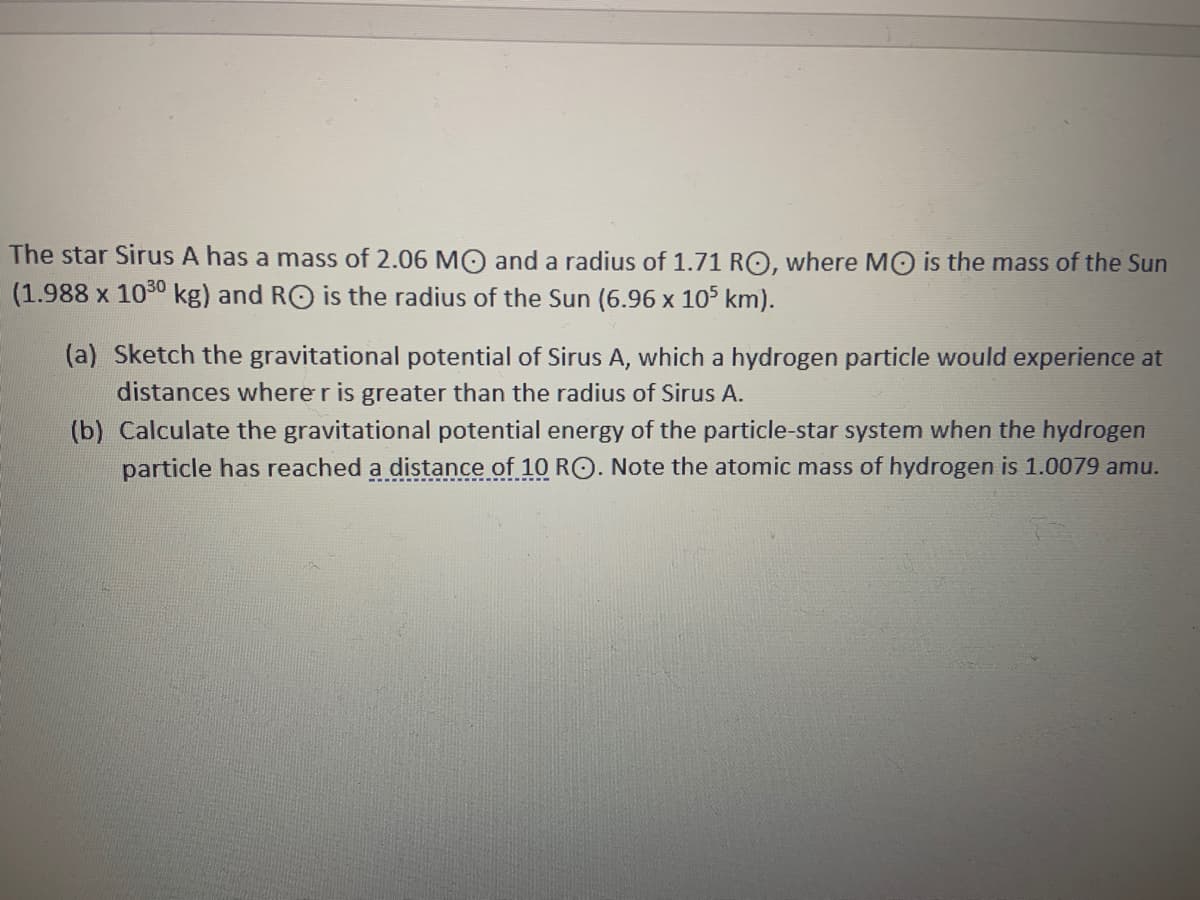The star Sirus A has a mass of 2.06 MO and a radius of 1.71 RO, where M0 is the mass of the Sun (1.988 x 1030 kg) and RO is the radius of the Sun (6.96 x 105 km). (a) Sketch the gravitational potential of Sirus A, which a hydrogen particle would experience at distances where r is greater than the radius of Sirus A. (b) Calculate the gravitational potential energy of the particle-star system when the hydrogen particle has reached a distance of 10 RO. Note the atomic mass of hydrogen is 1.0079 amu.
The star Sirus A has a mass of 2.06 MO and a radius of 1.71 RO, where M0 is the mass of the Sun (1.988 x 1030 kg) and RO is the radius of the Sun (6.96 x 105 km). (a) Sketch the gravitational potential of Sirus A, which a hydrogen particle would experience at distances where r is greater than the radius of Sirus A. (b) Calculate the gravitational potential energy of the particle-star system when the hydrogen particle has reached a distance of 10 RO. Note the atomic mass of hydrogen is 1.0079 amu.
Related questions
Question

Transcribed Image Text:The star Sirus A has a mass of 2.06 MO and a radius of 1.71 RO, where M0 is the mass of the Sun
(1.988 x 1030 kg) and RO is the radius of the Sun (6.96 x 105 km).
(a) Sketch the gravitational potential of Sirus A, which a hydrogen particle would experience at
distances where r is greater than the radius of Sirus A.
(b) Calculate the gravitational potential energy of the particle-star system when the hydrogen
particle has reached a distance of 10 RO. Note the atomic mass of hydrogen is 1.0079 amu.
Expert Solution
This question has been solved!
Explore an expertly crafted, step-by-step solution for a thorough understanding of key concepts.
Step by step
Solved in 2 steps with 2 images
